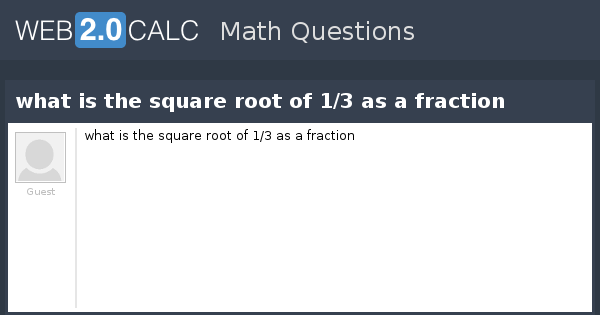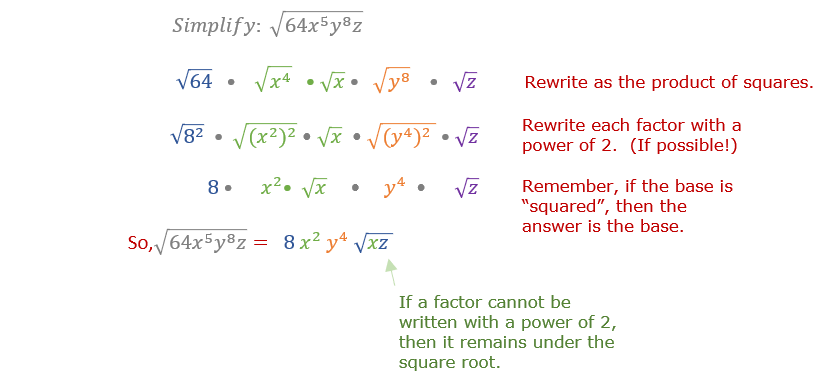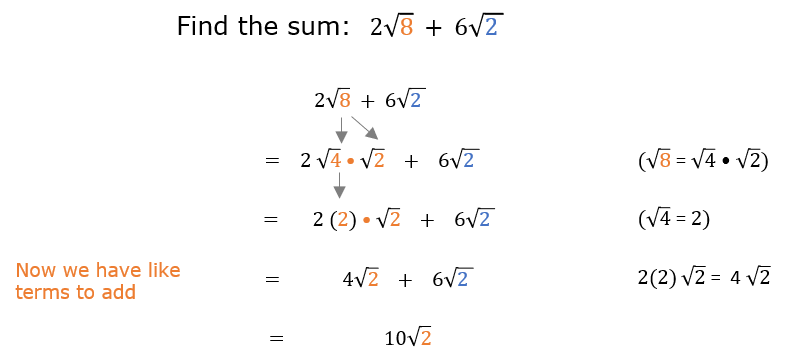Topic square root of 1/3: Delving into the concept of the square root of 1/3 reveals fascinating insights into mathematical simplification and practical applications. This guide explores the methods to simplify √(1/3), the mathematical principles behind it, and its relevance in various fields. Join us as we uncover the steps to rationalize this expression and its significance in mathematics.
Table of Content
- Understanding the Square Root of 1/3
- Introduction to Square Roots
- Calculating the Square Root of 1/3
- Simplification Techniques
- Rationalizing the Denominator
- Approximation Methods
- Applications in Mathematics
- Interactive Tools
- YOUTUBE: Video này hướng dẫn cách đơn giản hóa một phân số dưới dấu căn bậc hai, giúp bạn giải các bài toán một cách dễ dàng và hiệu quả.
Understanding the Square Root of 1/3
The square root of 1/3 can be expressed and simplified in various ways. This fraction represents an important concept in mathematics, especially in algebra and radical expressions.
Mathematical Explanation
The square root of a fraction is equal to the square root of the numerator divided by the square root of the denominator:
\[ \sqrt{\frac{1}{3}} = \frac{\sqrt{1}}{\sqrt{3}} = \frac{1}{\sqrt{3}} \]
To simplify this expression, we typically rationalize the denominator:
\[ \frac{1}{\sqrt{3}} \times \frac{\sqrt{3}}{\sqrt{3}} = \frac{\sqrt{3}}{3} \]
Steps to Simplify
- Rewrite the expression in fraction form: \( \sqrt{\frac{1}{3}} = \frac{\sqrt{1}}{\sqrt{3}} \).
- Simplify the numerator and the denominator: \( \frac{1}{\sqrt{3}} \).
- Rationalize the denominator: \( \frac{1}{\sqrt{3}} \times \frac{\sqrt{3}}{\sqrt{3}} = \frac{\sqrt{3}}{3} \).
Exact and Decimal Forms
The exact form of the square root of 1/3 is \( \frac{\sqrt{3}}{3} \). The decimal approximation is approximately:
\[ \frac{\sqrt{3}}{3} \approx 0.577 \]
Applications
This expression is commonly encountered in various areas of mathematics, including solving radical equations, geometry, and calculus.
| Exact Form | \( \frac{\sqrt{3}}{3} \) |
| Decimal Form | ≈ 0.577 |
Additional Resources
- For more detailed steps on simplifying square roots, visit .
- Explore different approaches to understanding square roots at .
- Use the calculator for practice.
- Review basic concepts on .

READ MORE:
Introduction to Square Roots
Square roots are fundamental concepts in mathematics, representing a number that, when multiplied by itself, gives the original number. The square root of a positive number has two values: one positive and one negative. For instance, the square root of 9 is both 3 and -3 because \( 3 \times 3 = 9 \) and \( -3 \times -3 = 9 \).
To simplify square roots involving fractions, such as the square root of 1/3, we apply specific rules. The square root of a fraction can be found by taking the square root of the numerator and the square root of the denominator separately. Thus, \( \sqrt{\frac{1}{3}} \) becomes \( \frac{\sqrt{1}}{\sqrt{3}} \), which simplifies to \( \frac{1}{\sqrt{3}} \).
It is a common practice in mathematics to rationalize the denominator, which involves eliminating the square root from the denominator. To rationalize \( \frac{1}{\sqrt{3}} \), multiply both the numerator and the denominator by \( \sqrt{3} \):
\[
\frac{1}{\sqrt{3}} \times \frac{\sqrt{3}}{\sqrt{3}} = \frac{\sqrt{3}}{3}
\]
Therefore, \( \sqrt{\frac{1}{3}} \) simplifies to \( \frac{\sqrt{3}}{3} \).
Understanding square roots and their simplification is essential for solving more complex mathematical problems, including those in algebra, calculus, and beyond. Mastering these basics provides a strong foundation for further mathematical learning and application.
Calculating the Square Root of 1/3
To calculate the square root of 1/3, we need to follow a series of mathematical steps to simplify the expression. Here's a detailed, step-by-step guide:
-
Understand the Expression:
The square root of a fraction is equal to the square root of the numerator divided by the square root of the denominator. In this case, we have:
\(\sqrt{\frac{1}{3}}\)
-
Simplify the Numerator and Denominator:
Since the numerator is 1, which is already simplified, we focus on the denominator:
\(\sqrt{\frac{1}{3}} = \frac{\sqrt{1}}{\sqrt{3}} = \frac{1}{\sqrt{3}}\)
-
Rationalize the Denominator:
To rationalize the denominator, multiply both the numerator and the denominator by \(\sqrt{3}\):
\(\frac{1}{\sqrt{3}} \times \frac{\sqrt{3}}{\sqrt{3}} = \frac{\sqrt{3}}{3}\)
Now, the expression no longer has a square root in the denominator.
-
Final Simplified Form:
The final simplified form of the square root of 1/3 is:
\(\sqrt{\frac{1}{3}} = \frac{\sqrt{3}}{3}\)
By following these steps, you can accurately calculate and simplify the square root of any fraction, ensuring that the denominator is rationalized for a more standard mathematical presentation.
Simplification Techniques
When dealing with square roots, especially those involving fractions, there are standard techniques to simplify them. Here, we will demonstrate the step-by-step process to simplify the square root of a fraction, specifically the square root of 1/3.
-
Express the Fraction under a Single Square Root:
The square root of a fraction can be written as the square root of the numerator divided by the square root of the denominator:
\[\sqrt{\frac{1}{3}} = \frac{\sqrt{1}}{\sqrt{3}} = \frac{1}{\sqrt{3}}\]
-
Rationalize the Denominator:
To rationalize the denominator, multiply both the numerator and the denominator by the square root of the denominator:
\[\frac{1}{\sqrt{3}} \times \frac{\sqrt{3}}{\sqrt{3}} = \frac{\sqrt{3}}{3}\]
This step ensures that the denominator is a rational number.
-
Simplified Form:
The expression is now simplified and free of square roots in the denominator:
\[\sqrt{\frac{1}{3}} = \frac{\sqrt{3}}{3}\]
Using these steps, any similar square root of a fraction can be simplified. This technique not only helps in simplifying the expressions but also makes it easier to handle in further mathematical operations.
Rationalizing the Denominator
Rationalizing the denominator involves rewriting a fraction so that the denominator no longer contains a radical. This process makes it easier to work with the expression in further calculations. Here is a detailed step-by-step guide to rationalizing the denominator of the square root of 1/3:
- Identify the fraction to be rationalized: \(\sqrt{\frac{1}{3}}\).
- Multiply the numerator and the denominator by the same radical to eliminate the radical in the denominator. In this case, multiply by \(\sqrt{3}\):
\[
\sqrt{\frac{1}{3}} \times \frac{\sqrt{3}}{\sqrt{3}} = \frac{\sqrt{1} \cdot \sqrt{3}}{\sqrt{3} \cdot \sqrt{3}}
\] - Simplify the expression by performing the multiplications:
\[
\frac{\sqrt{3}}{3}
\] - The denominator is now rationalized, and the expression is simplified to \(\frac{\sqrt{3}}{3}\).
This technique is beneficial when dealing with more complex algebraic expressions and ensures that all calculations can be carried out without the difficulty of dealing with radicals in the denominator.

Approximation Methods
Calculating the square root of a number like
-
Estimation:
Begin by identifying two perfect squares between which
\(\frac{1}{3}\) lies. For instance, since \( \frac{1}{3} \) is less than 1 but greater than 0, you know the square root is between 0 and 1. -
Iterative Method:
Using an iterative method like the Babylonian method (or Heron's method), we can find an approximation:
- Make an initial guess (let's guess 0.5).
- Divide \( \frac{1}{3} \) by the guess (e.g., \( \frac{1}{3} \div 0.5 = 0.666 \)).
- Average the guess and the quotient (e.g., \( \frac{0.5 + 0.666}{2} = 0.583 \)).
- Repeat the process with the new guess.
This method quickly converges to a more accurate approximation.
-
Using a Calculator:
Most modern calculators have a square root function that can directly compute
\(\sqrt{\frac{1}{3}}\) . For example, entering\(\sqrt{0.333}\) will yield approximately 0.577.
These methods ensure that we can find the square root of
Applications in Mathematics
The square root of 1/3 finds various applications in mathematics, spanning areas such as geometry, algebra, and numerical methods. Understanding its applications enhances problem-solving skills and offers insights into complex mathematical concepts.
- Geometry:
Square roots are fundamental in calculating distances, especially in coordinate geometry. For instance, the distance between points (x1, y1) and (x2, y2) can be found using the distance formula, which involves square roots:
\( \sqrt{(x_2 - x_1)^2 + (y_2 - y_1)^2} \)
- Algebra:
In algebra, square roots are essential in solving quadratic equations. The quadratic formula, \( x = \frac{-b \pm \sqrt{b^2 - 4ac}}{2a} \), relies on the computation of square roots.
- Trigonometry:
Square roots appear in trigonometric identities and formulas, such as in the Pythagorean identity: \( \sin^2(x) + \cos^2(x) = 1 \), where the sine and cosine functions may involve square roots when solving for angles and lengths.
- Calculus:
Square roots are used in calculus for finding derivatives and integrals involving square root functions, such as in the differentiation of \( f(x) = \sqrt{x} \) and integration problems.
- Probability and Statistics:
Square roots are used in statistical formulas, such as in the standard deviation calculation, where the variance (mean of squared deviations) is square rooted to find the standard deviation:
\( \sigma = \sqrt{\frac{\sum (x_i - \mu)^2}{N}} \)
Interactive Tools
To assist with calculating and simplifying the square root of fractions, particularly the square root of 1/3, there are several online interactive tools available. These tools provide step-by-step solutions, visual aids, and various methods to understand and approximate the value of the square root of 1/3. Here are some recommended tools:
-
Online Square Root Calculator
This calculator allows you to input any number or fraction and provides the square root. It also shows the step-by-step process of how the square root is derived.
-
Symbolab Square Root Calculator
Symbolab offers an advanced calculator that not only computes the square root but also provides a detailed explanation of the calculation process. You can enter 1/3 to get the square root, including simplification and rationalization steps.
-
Mathway Calculator
Mathway's calculator supports various mathematical functions, including finding the square root of fractions. Entering 1/3 will yield the square root along with a step-by-step guide to understand the process.
-
Desmos Scientific Calculator
Desmos provides a user-friendly interface where you can input fractions and get the square root. The visual graphing feature helps in understanding the square root function better.
-
WolframAlpha Computational Engine
WolframAlpha not only calculates the square root of 1/3 but also provides additional information such as decimal approximations, graphical representations, and related mathematical properties.
Additionally, you can use these tools to explore other mathematical concepts related to square roots and fractions:
| Tool | Features | Link |
|---|---|---|
| Online Square Root Calculator | Step-by-step solutions, simplification, and rationalization | |
| Symbolab Square Root Calculator | Detailed explanations, multiple methods | |
| Mathway Calculator | Step-by-step guide, supports various functions | |
| Desmos Scientific Calculator | Visual graphing, user-friendly interface | |
| WolframAlpha Computational Engine | Decimal approximations, graphical representations |
These tools are highly beneficial for students, educators, and anyone looking to deepen their understanding of square roots and their applications in mathematics.
Video này hướng dẫn cách đơn giản hóa một phân số dưới dấu căn bậc hai, giúp bạn giải các bài toán một cách dễ dàng và hiệu quả.
Đơn giản hóa một phân số dưới dấu căn bậc hai - Gian lận hợp pháp trong toán học
READ MORE:
Video này giải thích tại sao lũy thừa 1/2 của x có nghĩa là căn bậc hai, giúp bạn hiểu sâu hơn về khái niệm toán học này.
Tại sao "x lũy thừa 1/2" có nghĩa là căn bậc hai?










